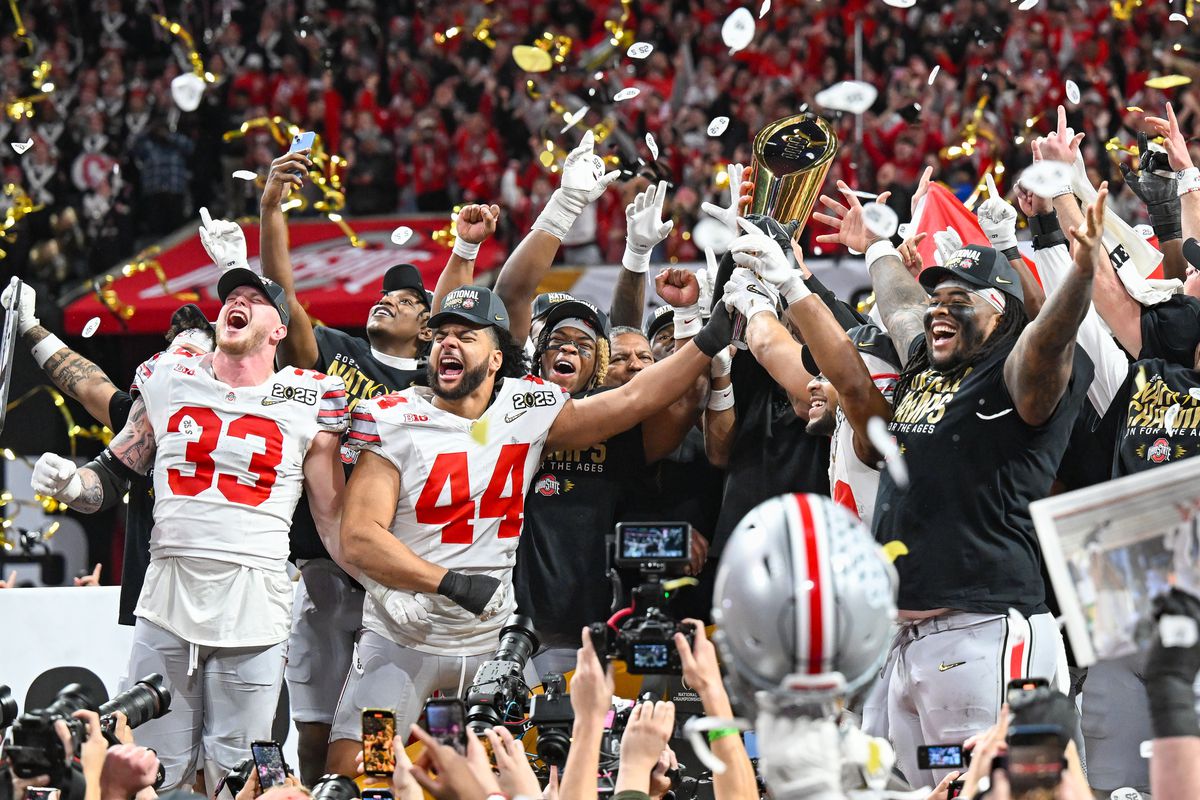In what was once a college football tradition where each regular season game held near life-or-death implications for national title hopes, Ohio State’s latest postseason triumph under the newly expanded College Football Playoff (CFP) system has highlighted a seismic shift in the sport’s structure. The Buckeyes’ road to glory in the 2024-25 season not only reignited the debate about playoff seeding and rest periods—it exposed how the regular season, once sacrosanct, is becoming an afterthought.
The Expanded CFP: Blessing or Curse?
The 12-team College Football Playoff format, instituted to allow more access for Power Five programs and potential Cinderella stories from the Group of Five, was supposed to level the playing field and offer a broader competitive landscape. On paper, it succeeded. But beneath the surface, Ohio State’s 2024-25 campaign revealed unintended consequences.
Ohio State entered the playoff as the No. 9 seed, having lost two key regular season games—including the monumental clash against Michigan. Just a few years ago, that loss would have signaled the end of any title hopes. But under the new format, the Buckeyes were not only alive but also comfortably slotted into the bracket.
The result? They stormed through the postseason, taking down higher seeds with ease, peaking at the right moment. The culmination was a national title that, while deserved, left many fans and analysts asking: If losing to your archrival doesn’t cost you a shot at the title, what does the regular season really mean anymore?
The Regular Season’s Declining Stakes
College football’s regular season used to be its crown jewel. Unlike the NFL or college basketball, where playoff berths are plentiful, college football made every Saturday a crucible. A single loss, particularly late in the season, could spell doom. That pressure created iconic moments: the “Game of the Century” matchups, the heartbreaks, and the Cinderella runs. Now, those high-wire tensions have dulled.
Under the old BCS or even four-team CFP formats, each game functioned like an elimination round. In contrast, the 12-team CFP has made room for strategic losses. Teams are now incentivized to manage player health, rotate quarterbacks, and even consider strategic benchings during the season—not to win every game, but to peak in December and January.
Ohio State’s 2024 campaign was a case study. Despite injuries and uneven play, the Buckeyes were never truly in danger of missing the playoff once they cleared their mid-season schedule. The Michigan game, once a cataclysmic season finale, became little more than a seeding determinant. That’s a dangerous precedent for a sport built on regional rivalries and emotional stakes.
Fan Experience: Excitement or Exhaustion?
There’s no denying the expanded CFP brings more football, more matchups, and more revenue. But it also brings fan fatigue. The proliferation of late-season games that don’t truly impact championship hopes risks turning the regular season into a bloated prelude rather than a defining arc.
When Ohio State lost to Michigan, many fans expected another offseason of hand-wringing and what-ifs. Instead, they watched the Buckeyes regroup, dominate, and win it all. For some Ohio State faithful, it was a redemptive arc. For others, including Michigan fans and neutral observers, it felt like the season’s dramatic rhythm had been undercut.
What’s the point of The Game, of the SEC West gauntlet, or the Pac-12 After Dark chaos, if none of it carries real playoff consequences?
Coaches Adapting to a New Era
Another significant shift? Coaching strategies. Ryan Day, under immense pressure following consecutive losses to Michigan, seemingly outcoached every opponent in the postseason. His decision to treat the regular season as a developmental runway for younger players and depth-building paid off. The team that began the year wasn’t the one that hoisted the national championship trophy.
That’s not unique to Day. Across the country, coaches are adjusting their philosophies. Load management—once the domain of the NBA—is now a quiet trend in college football. Protecting star players during “lower stakes” matchups, rotating quarterbacks more freely, and experimenting with formations mid-season have all become viable tactics in a system where making the playoff is far more forgiving.
If the only thing that matters is the final month of play, why burn out your roster in October?
TV Ratings and the Business of College Football
From a business standpoint, the playoff expansion is already paying dividends. The CFP’s first 12-team bracket shattered viewership records. Networks, advertisers, and the NCAA have every reason to celebrate.
But there’s a balance to maintain. College football’s most lucrative brands—Alabama, Ohio State, Michigan, Texas, and others—still rely on regular season narratives to drive ratings. Rivalries like Red River, Iron Bowl, and The Game still command massive audiences. But what happens when those games become less meaningful? When Michigan-Ohio State is simply a prelude to both teams securing playoff spots anyway?
Already, the 2024 Michigan-Ohio State game had a noticeable shift in tone. Michigan fans celebrated the win, but with Ohio State still making the playoff and eventually winning it all, the emotional payoff felt hollow. Rivalries depend on consequence—and consequence is slipping.
Recruiting and Player Development
Another subtle impact: recruiting.
Recruits used to gravitate toward programs with the clearest path to a national title. Now, more schools have legitimate playoff opportunities. That’s a win for parity, but also shifts how programs sell themselves. Development, health management, and postseason performance are becoming more central to recruiting pitches.
Ohio State’s postseason dominance, despite a turbulent regular season, allows them to market themselves as a program that knows how to “win when it counts.” That matters.
Meanwhile, teams that dominated the regular season but flamed out in the playoffs—like Georgia in 2024—suddenly look more vulnerable on the recruiting trail.
The Alabama Paradox
For decades, Nick Saban’s Alabama dominated by making every week feel like a playoff game. His “process” was designed for excellence in every phase of the season. But in a 12-team playoff world, that level of perfection might be overkill.
The paradox: Alabama may now need to learn how to lose strategically. That’s not to say teams should throw games, but rather to prioritize roster health and December momentum over October perfection.
Ohio State demonstrated that mastering the postseason grind matters more than winning the Big Ten East.
Possible Solutions or Adjustments
It’s too early to reverse course on the expanded CFP, but tweaks may be necessary. Options include:
- Rewarding Conference Champions More Significantly: Giving first-round byes only to conference champions incentivizes regular season effort.
- Limiting the Number of Teams per Conference: Prevents cannibalization and rewards more diversity in playoff representation.
- Enhanced Seeding Rules: Consider punishing teams more harshly for late-season losses.
- Protecting Rivalry Stakes: A formula or rule that gives rivalry games more weight in seeding decisions could preserve tradition.
Without adjustments, we risk turning college football into a mirror of the NFL—entertaining, yes, but lacking the wild, chaotic emotion that made Saturdays so special.
The Future of the Regular Season
Ohio State’s victory doesn’t invalidate their season; they played by the rules and mastered the format. But it does illuminate a broader trend: college football’s regular season is morphing into a preparatory stage, not the main event.
The purity of the regular season—every Saturday feeling like life or death—is slowly fading. While the postseason has never been more exciting, fans, players, and institutions must now wrestle with the reality that the game they fell in love with is evolving.
The question for college football isn’t whether the new format works—it clearly does in terms of money and exposure. The question is whether the soul of the sport, long rooted in emotional Saturdays and do-or-die moments, can survive this era of expansion.



